Delmarva chicken industry celebrates 100th birthday
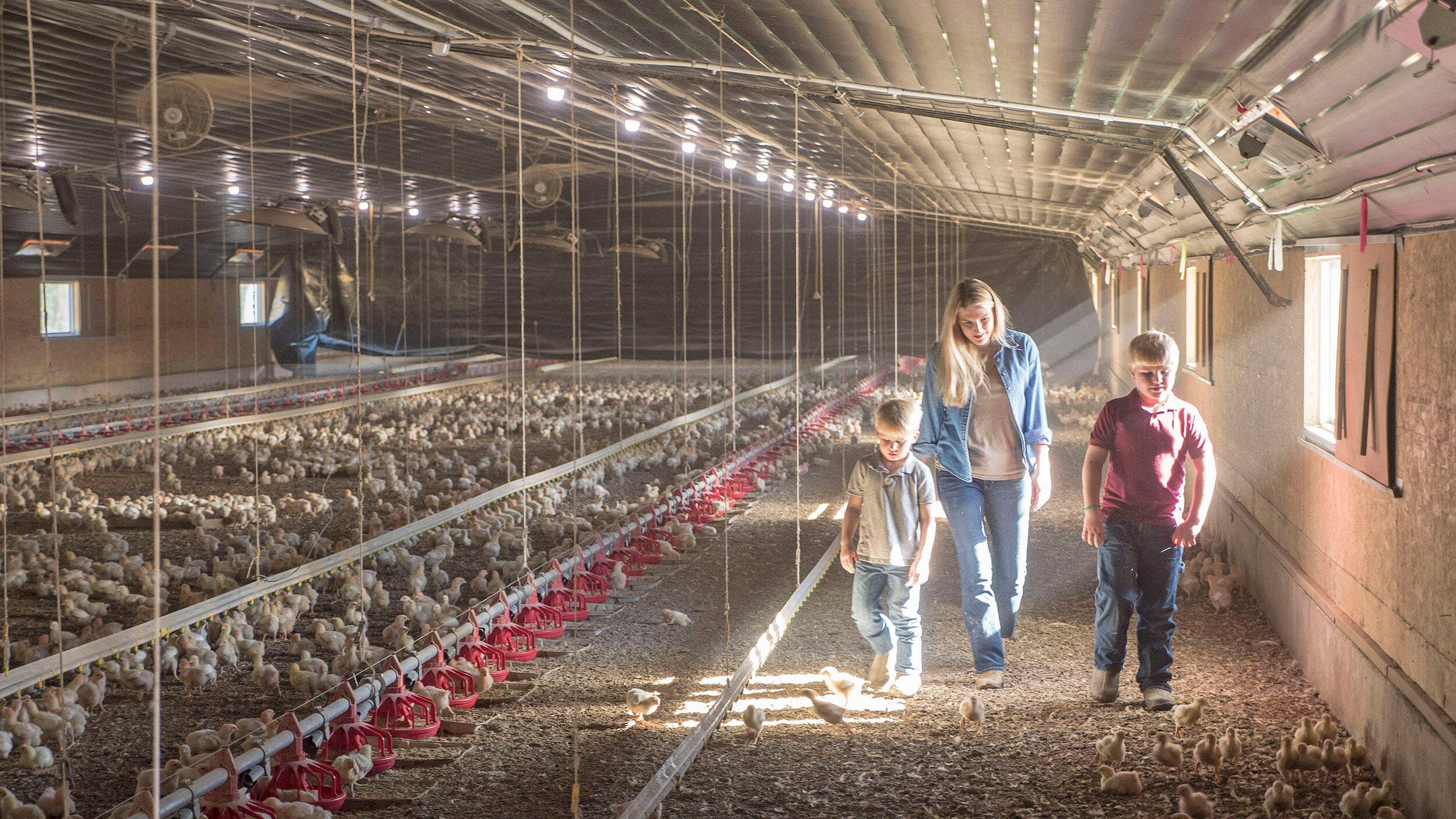
2023 also marks 75th anniversary of Delmarva Chicken Association
The Delmarva Chicken Association (DCA) was founded in 1948. That same year, chicken farmers nationwide turned an eager eye toward Georgetown, Delaware. After a three-year nationwide search, the Chicken of Tomorrow contest winner would be announced at the first Delmarva Chicken Festival.
The contest’s goal? Create a better breed of broiler chicken.
California-based Vantress Hatchery received the $5,000 first prize, but the Delmarva Peninsula’s farmers were already winners. The industry for broilers, which are raised for meat rather than eggs, had been born in Delaware in 1923, and a meatier bird would assuredly boost the state’s output and stature.
Today, the $5 billion-a-year Delmarva chicken industry encompasses more than 1,300 family farmers, 18,000 poultry company employees and hundreds of related businesses for 50,000 total jobs. Such vitality, according to the DCA, is cause for celebration.
Throughout 2023, the trade association has been marking the centennial of this key Delaware agriculture sector’s founding along its own 75th anniversary. Its “Growing for 100 Years” campaign illustrates the evolution and impact of the industry and the DCA’s work. To culminate the festivities, the Delmarva Chicken Festival is returning for a one-time event from 1 to 7 p.m. Oct. 7 at Arthur W. Perdue Stadium in Salisbury, Maryland.
“Our focus and the way we serve our members,” notes James Fisher, DCA communications manager, “have changed so much over the years.”
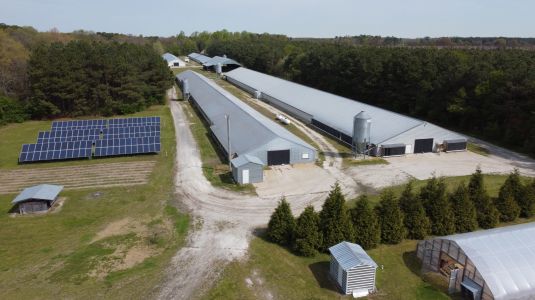
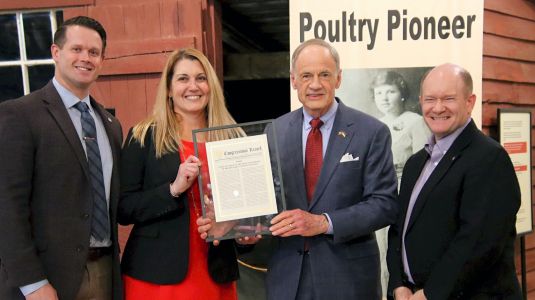
An Advantageous Error
It all started in 1923 when Cecile Steele of Ocean View, Delaware, ordered 50 chicks from Vernon Steen’s Hatchery in Dagsboro. Like most women in rural areas, Steele raised chickens for eggs.
The rare chicken dinner was a tough rooster or a hen that no longer produced eggs. Young, tender chicken was a high-priced luxury item.
But Steen’s hatchery sent Steele 500 chicks instead of 50, and she opted to raise them for meat. It was a daring move at the time.
Eighteen weeks later, Steele had 387 surviving chickens weighing about 2¼ to 2½ pounds, which she sold for 62 cents a pound — about $11 a pound in today’s dollars. The budding entrepreneur ordered 1,000 chicks in 1924. By 1928, she was selling 26,000 birds a year.
Plagued by a series of crop blights, neighboring farmers followed in her footsteps. “There was a receptive audience in Kent and Sussex counties in Delaware and on the Eastern Shore of Maryland and Virginia,” Fisher says.
A Better Chicken
But a chicken dinner remained too pricy for most consumers, and the Greater Atlantic & Pacific Co. — better known as A&P — and poultry grower influencers decided to do something about it. Enter the Chicken of Tomorrow contest.
The industry wanted a bird with more white meat and larger drumsticks than were typical among the speckled Barred Rock breed favored for eggs and meat at the time. The contest succeeded by leading to the white-plumed bird that is so common today.
While the contest results interested agricultural experts, the first festival’s parade, pageant fireworks and food appealed to the public. When held as an annual event, the festival’s activities continued to be a draw.
For instance, in 1950, the Delmarva Chicken Festival unveiled a 400-pound, 10-foot-wide frying pan capable of cooking a half-ton of chicken. The gargantuan pan was retired in 1987 and donated to the Georgetown Historical Society, where it remains in a museum collection.
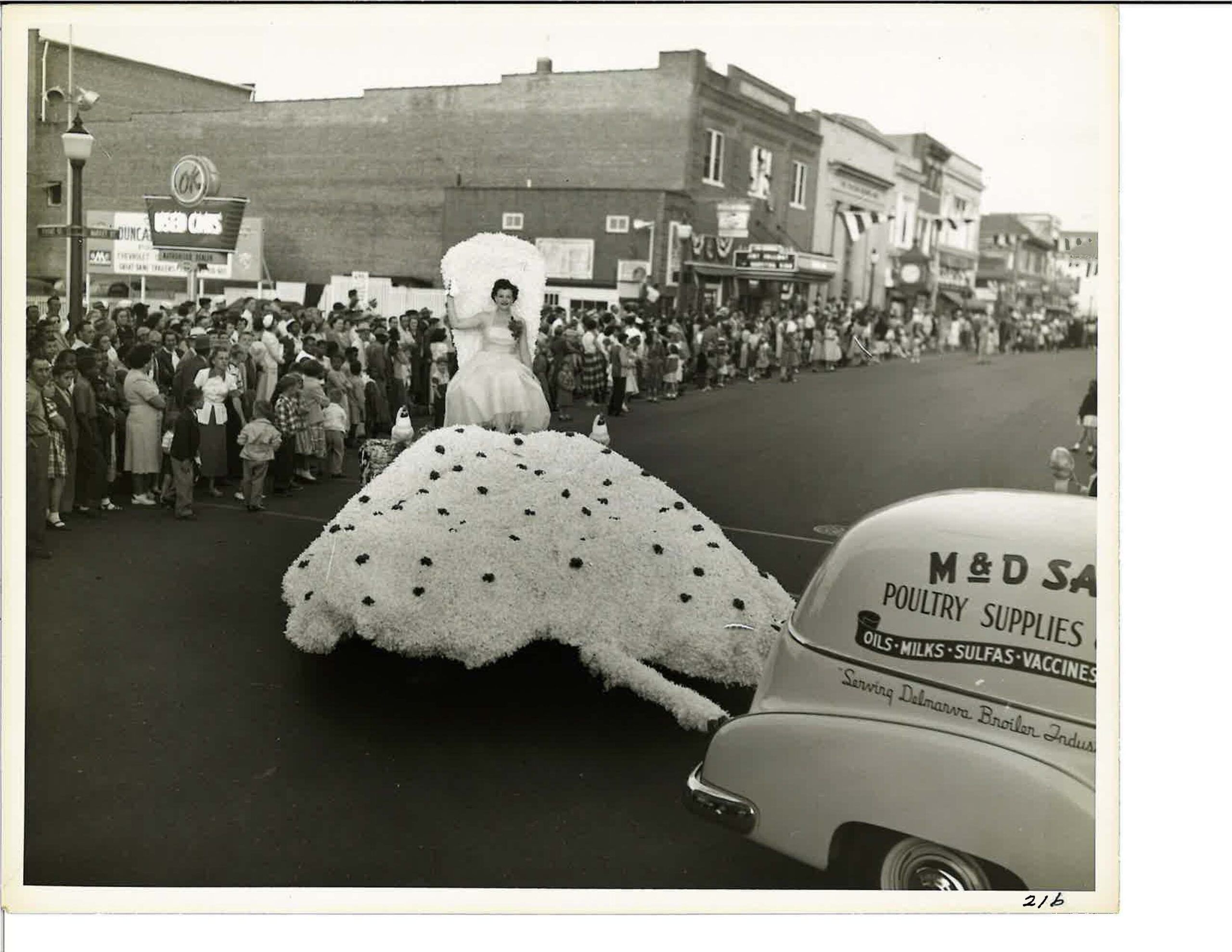
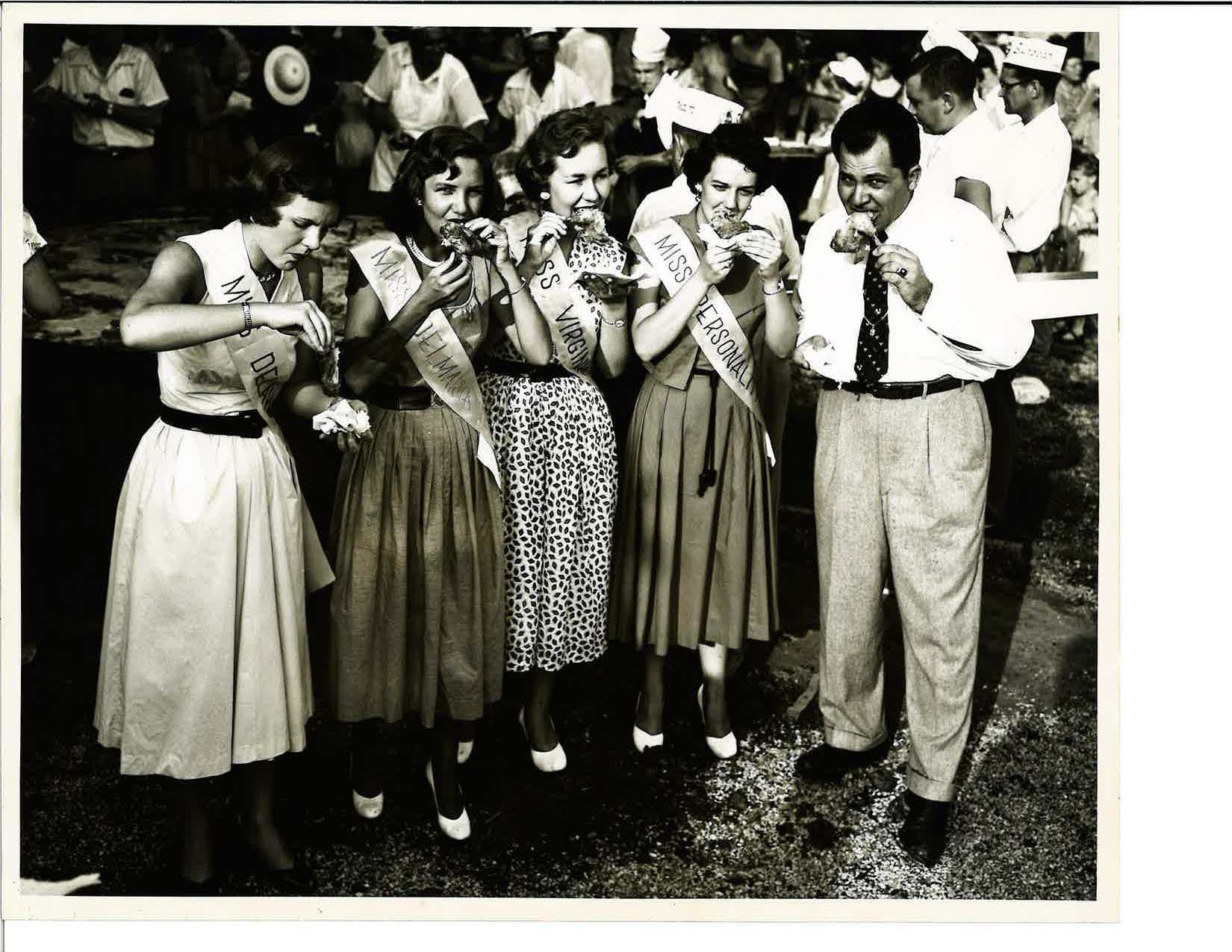
Changing Times
In 1962, almost all chicken was sold as whole birds. Thirty years later, parts — breasts, thighs, wings — dominated sales. Also in 1962, farmers sold their flocks at auction. But, increasingly, companies like Perdue Farms began contracting farmers to grow for them, creating a vertical integration system that remains today.
Although the number of Delmarva growers has dropped, technology and efficient business practices have helped the industry do more with fewer growers, Fisher says. For example, it takes 75% fewer resources to produce chickens today than it had in the 1960s, and 95% of poultry litter is now recycled and reused as crop fertilizer.
As the industry changed, so did the DCA, which formerly was known as Delmarva Poultry Industry Inc. The trade organization focuses on advocacy, education and outreach to its 1,600 members and promotes initiatives such as a vegetative environmental buffers program and an electric buying group.
The labor-intensive annual festival ceased after the 2014 event, but Fisher says people never stopped asking about it. So the trade association’s 75th anniversary seemed to be the perfect time to bring it back for one day.
The DCA is working with the Greater Salisbury Committee, the Salisbury Area Chamber of Commerce and the Wicomico Farm Bureau to organize the event, which will feature local food trucks, vendors and children’s activities. The Jones Boys, Jimmy Charles and Mike Hines & The Look will perform live music throughout the day.
Teams from Delmarva’s five chicken companies — Allen Harim Foods, Amick Farms, Mountaire Farms, Perdue Farms and Tyson — will compete in Chicken Capers contests, a medley of field day-style games. The event also will include historical and educational exhibits paying tribute to an industry that drives Delaware’s economic engine.
Sussex County still has more broiler farms than any county in the country, and it all started with Mrs. Steele.
“It’s not often you can trace an entire way of farming or a sector to one person,” Fisher says. “We want to make sure that agriculture and farming don’t lose a place on Delmarva because it’s so important to our history, culture, economy and the way we eat.”
Newsletter Sign Up
Stay Up To Date With Delaware